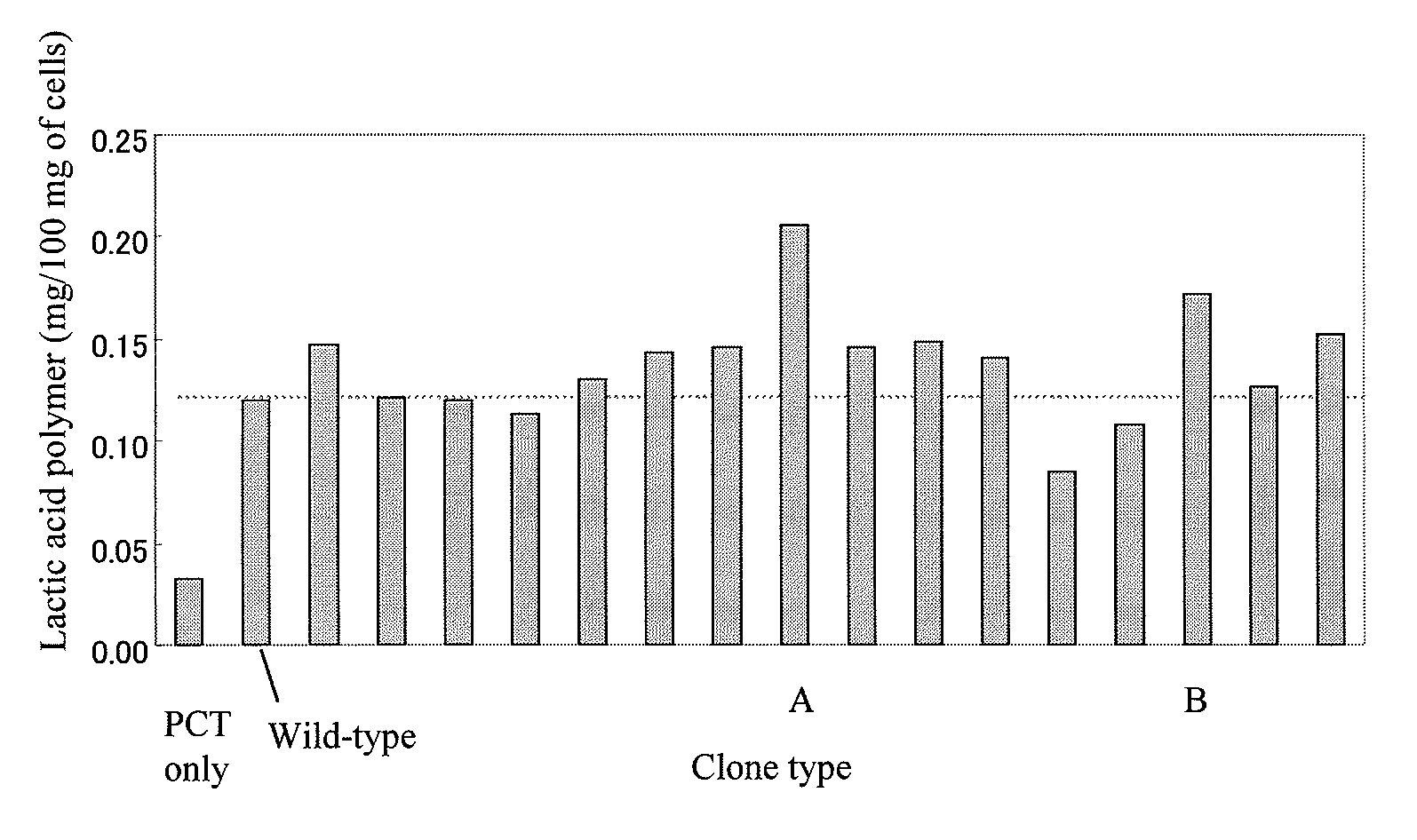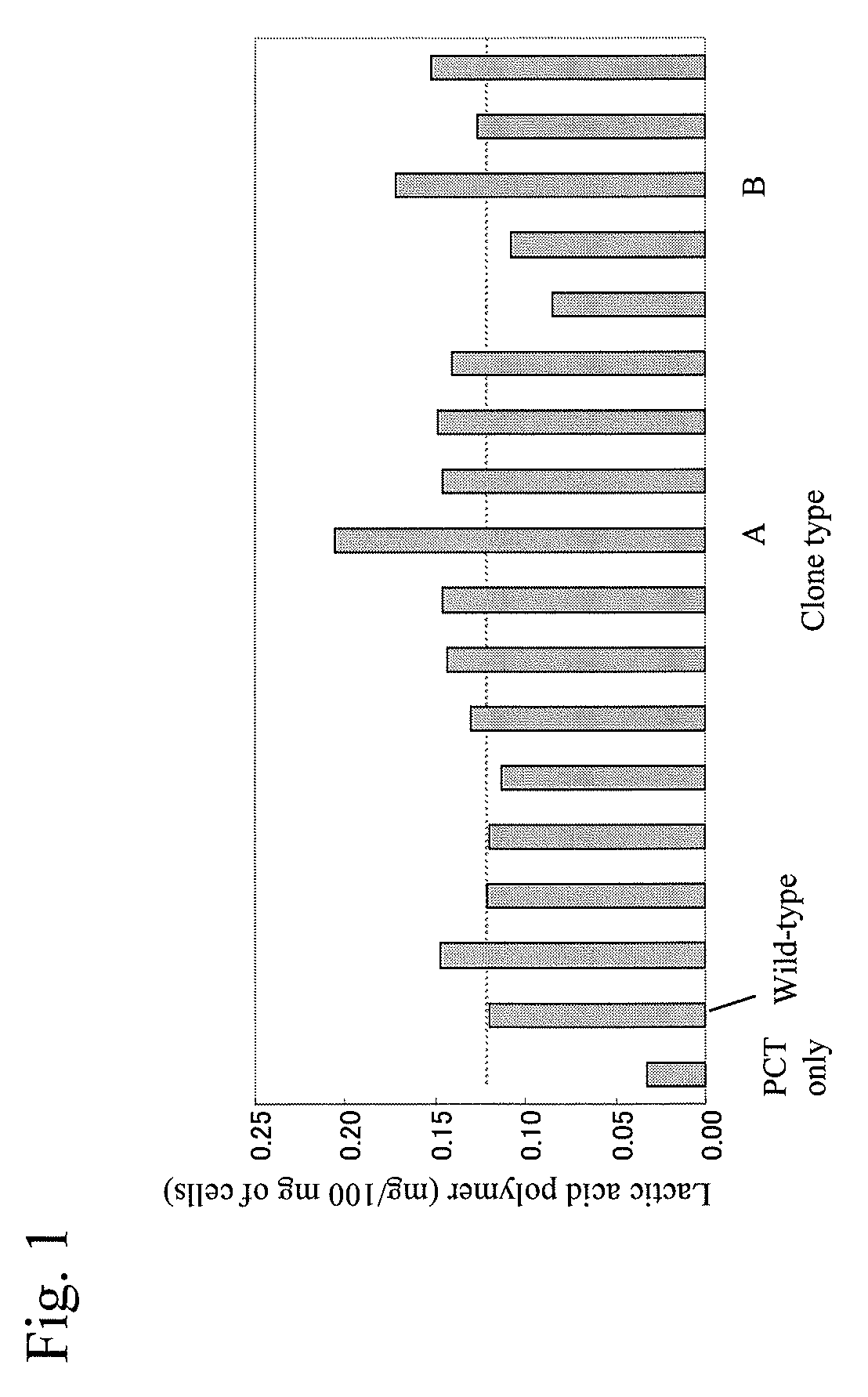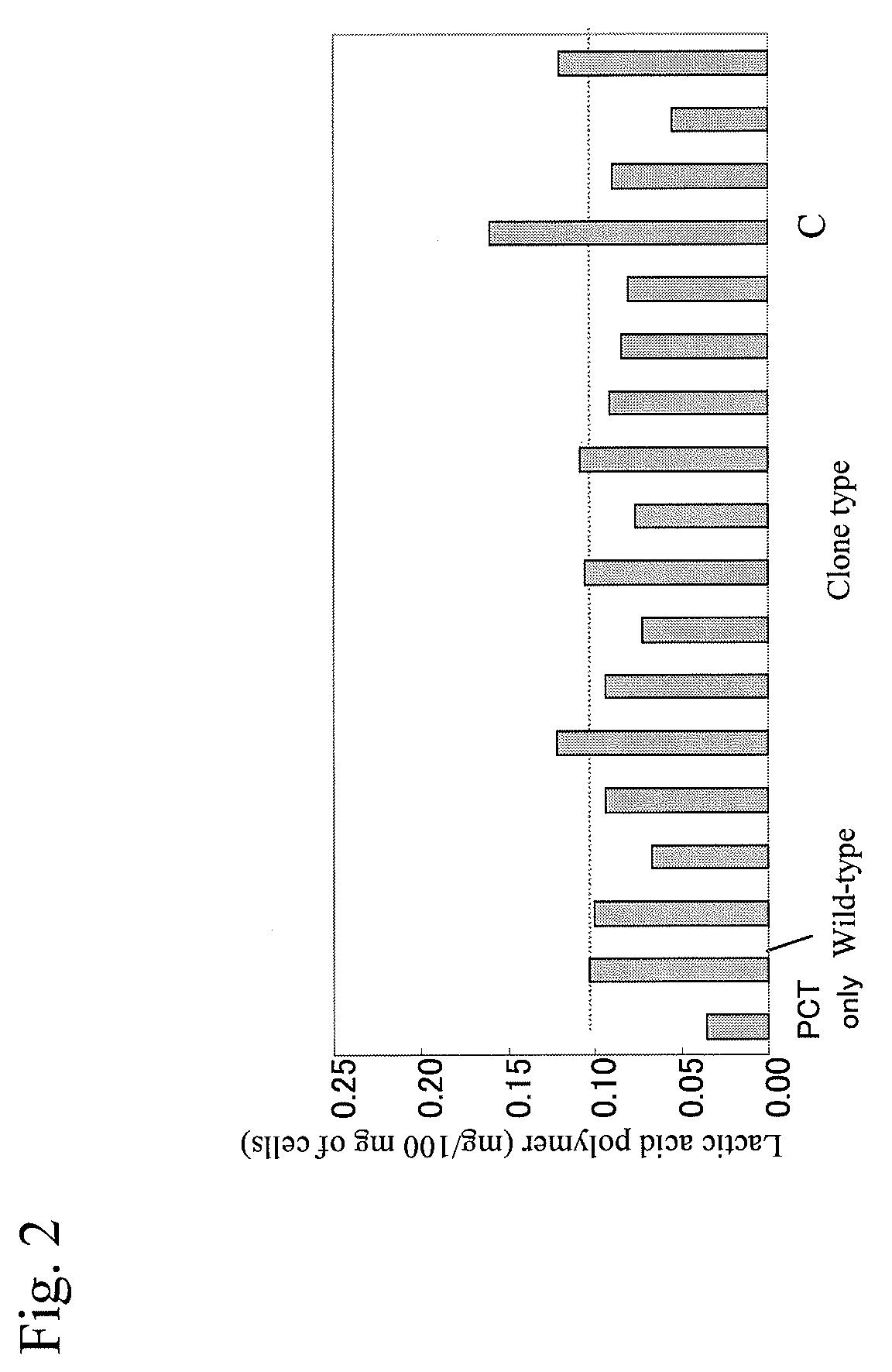Mutant polyhydroxyalkanoic acid synthase gene and method for producing aliphatic polyester using the same
a technology of aliphatic polyester and polyhydroxyalkanoic acid, which is applied in the field of aliphatic polyester production by mutant polyhydroxyalkanoic acid synthase gene and method, can solve the problems that cannot be thoroughly examined from the viewpoint of productivity improvement, and achieve excellent polymerization activity, excellent aliphatic polyester productivity, and significant improvement of aliphatic polyester productivity
- Summary
- Abstract
- Description
- Claims
- Application Information
AI Technical Summary
Benefits of technology
Problems solved by technology
Method used
Image
Examples
example 1
Preparation of pTV118N-PCT-C
[0077]In Example 1, pTV118N-PCT-C, into which the phaC2 gene derived from the Alcanivorax borkumensis SK2 strain and the pct gene derived from Megasphaera elsdenii had been introduced, was first prepared based on the pTV118N vector (manufactured by Takara Bio).
[0078]The genome of Megasphaera elsdenii (ATCC17753) was obtained in accordance with a conventional technique, and the pet gene was then obtained via PCR. The MePCTN: 5′-atgagaaaagtagaaatcattac-3′ (SEQ ID NO: 7) primer and the MePCTC: 5′-ttattttttcagtcccatgggaccgtcctg-3′ (SEQ ID NO: 8) primer were used to amplify a DNA fragment comprising the pct gene.
[0079]Genes were amplified from the genome under the conditions described below. PCR was carried out using an enzyme (KOD plus) via a cycle of 94° C. for 1 minute, 30 cycles of 94° C. for 0.5 minutes, 50° C. for 0.5 minutes, and 72° C. for 2 minutes, and a cycle of 94° C. for 2 minutes. The PCT gene derived from M. elsdenii was inserted into a site bet...
PUM
| Property | Measurement | Unit |
|---|---|---|
| pH | aaaaa | aaaaa |
| temperature | aaaaa | aaaaa |
| temperature | aaaaa | aaaaa |
Abstract
Description
Claims
Application Information
 Login to View More
Login to View More - Generate Ideas
- Intellectual Property
- Life Sciences
- Materials
- Tech Scout
- Unparalleled Data Quality
- Higher Quality Content
- 60% Fewer Hallucinations
Browse by: Latest US Patents, China's latest patents, Technical Efficacy Thesaurus, Application Domain, Technology Topic, Popular Technical Reports.
© 2025 PatSnap. All rights reserved.Legal|Privacy policy|Modern Slavery Act Transparency Statement|Sitemap|About US| Contact US: help@patsnap.com



